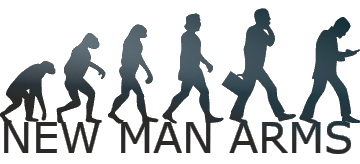Verifying online content can seem like a daunting expedition. Yet, the art of verification is not as complex as it might appear. It boils down to practice, persistence, and the strategic use of digital investigative tools at our disposal. The digital age has blessed us with an array of methods and tools designed for this very purpose. Perhaps the biggest challenge lies not in the verification itself but in remembering the plethora of resources available to us.
Consider this guide your compass in the realm of verification magic. It’s crafted to demystify the key principles, offer handy checklists, and unveil our preferred verification methods. More importantly, it introduces the five pillars of verification, serving as a beacon for quick reference whenever you’re navigating the murky waters of online information.
The rapid spread of information (and misinformation) in today’s digital age necessitates that every journalist, not just those specializing in tech or social media, masters the fundamental skills of verification. This is particularly crucial when dealing with breaking news, where the balance between speed and accuracy becomes a tightrope walk. Newsrooms are in a constant battle against being duped and inadvertently becoming conduits for spreading falsehoods. The digital realm is teeming with misinformation agents eager for their moment in the spotlight, often seeding rumors and distorted content to manipulate public perception.
Verification is an adaptive beast, continually evolving as tech platforms tweak privacy settings, research tools come and go, and new resources emerge. The initial step in any verification process involves asking whether the content in question correlates with a real event. This question becomes especially pertinent in the whirlwind of breaking news situations.
Take, for instance, a viral video showing long queues and disgruntled customers at Chicago’s O’Hare International Airport. Before diving into the authenticity of the video’s creator, the date, or even the location, the first port of call is to ascertain if the airport is currently experiencing issues.
Verification then extends to the website hosting the content, the creator of the article, its publication date, and its reach, but always circles back to the core claim of the piece.
The Five Pillars of Verification
Breaking down verification into manageable chunks not only makes the process more approachable but also quite enjoyable. Whether it’s eyewitness videos, doctored images, fake social media accounts, or memes, the fundamental checks remain the same:
- Originality: Is what you’re seeing the original account, article, or piece of content?
- Authorship: Who is the creator of the content?
- Timestamp: When was the content created?
- Location: Where was the content created or captured?
- Purpose: Why was the content created in the first place?
Deepening your understanding of each pillar fortifies your verification arsenal.
Navigating Uncertainty in Verification
Rarely is the process of verification black and white. More often, it resembles the meticulous piecing together of a puzzle, akin to an ancient detective laying out clues on an inquiry board. Each piece of evidence, whether it be a location, a name, or a crucial statement, adds to the broader picture. The connections between these clues weave a web of understanding, applying traditional investigative methods to the digital age.
So, embrace your inner detective—be it Sherlock Holmes or Nancy Drew—gather as much evidence as possible, and tread the path of verification with an open mind. Remember, the inherent uncertainty in this process underscores the importance of transparency about what is known and unknown, particularly when it informs our reporting.
The Verdict: To Verify or Not to Verify
Venturing down the rabbit hole of verification can sometimes become a wild goose chase. It’s essential to recognize when to step back, avoiding the trap of fixation on a single piece of content or hypothesis that hinders the verification process. Our biases can lead us astray, making it imperative to approach each piece of content with a healthy dose of skepticism.
The digital expanse is both vast and deep, filled with potential misdirection and contradictory evidence. Keeping an open mind and broad perspective ensures that we don’t overlook crucial pieces of the puzzle.
The Tools of the Trade
Search Engines
The simplicity of a Google search belies its power as a verification tool. Search engines serve as the first line of inquiry, offering a broad overview of the topic at hand. Whether it’s tracing the origins of an image through reverse search or gauging the veracity of a claim by examining related news articles, search engines like Google, Bing, and DuckDuckGo are invaluable. They provide a starting point from which deeper investigations can begin.
Direct Contact
Sometimes, the most straightforward approach yields the best results. Reaching out directly to the source of content—be it an individual, organization, or company—via phone or email can clarify uncertainties. This method allows for direct questioning and the opportunity to gauge the authenticity of responses, providing insights that digital tools alone may not reveal.
Social Media
Social media platforms are not just spaces for sharing and communication; they are goldmines of information for verification. Tools like Twitter’s Advanced Search, Facebook’s Graph Search, and LinkedIn profiles can uncover the digital footprints of individuals and organizations. Analyzing these footprints helps verify identities, track the spread of information, and understand the context behind the content.
Archival Services
Web archives like the Wayback Machine and Archive.is akin to time machines, allowing verifiers to view past versions of websites and track changes over time. These services are crucial for investigating the legitimacy of a website, providing a historical context that might shed light on current claims or content.
Visual Verification Tools
In an era where images and videos can be easily manipulated, tools specialized in visual verification are vital. Reverse image search engines like TinEye, and video verification tools like InVID, help trace the origins of visual content, assess its authenticity, and determine its original context. These tools are indispensable in distinguishing between genuine and altered visuals.
Geolocation Tools
Verifying the ‘where’ can often validate or debunk a claim. Geolocation tools such as Google Earth and Bellingcat’s geolocation techniques enable investigators to verify the location depicted in images or videos. By comparing landmarks, weather conditions, and shadows to known data, these tools help ascertain whether a piece of content truly originates from the claimed location.
Fact-Checking Websites
Fact-checking websites like Snopes, FactCheck.org, and PolitiFact are allies in the quest for truth. They provide detailed analyses of popular claims, rating their accuracy and offering evidence-based conclusions. These platforms are valuable for quickly verifying widely circulated stories and rumors.
Developing a Personalized Verification Toolkit
Creating a personalized toolkit tailored to one’s specific verification needs makes the process more intuitive and efficient. This might involve bookmarking favorite sites, organizing tools into browser folders, or utilizing dashboards like Start. me for quick access. As the digital landscape changes, so too should your toolkit, adapting to include new resources and discard outdated ones.
Consider setting up a monitoring dashboard or alert system to track similar content or discussions related to your investigation. Staying abreast of the latest developments in tech, privacy settings, and research tools is also crucial, ensuring your verification methods remain effective and up-to-date.
Verification in the digital age is a blend of art and science, requiring a mix of skepticism, curiosity, and diligence. This guide aims to demystify the process, providing you with a solid foundation to tackle the challenges of online content verification.





